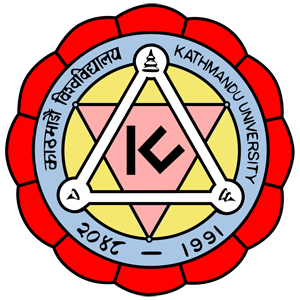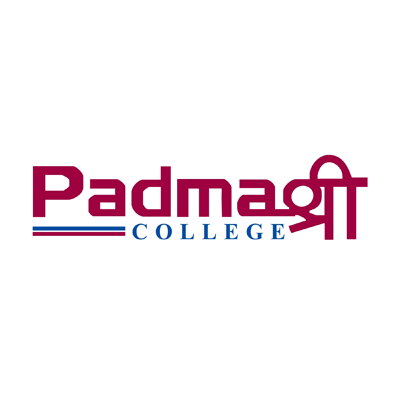Overview
BE in Geomatics Engineering at Department of Geomatics Engineering Kathmandu University
Introduction to Geomatics Engineering
Geomatics Engineering represents a systemic, multidisciplinary, integrated approach to handling spatially geo-referenced data. This involves selecting the appropriate instruments and techniques for collecting, storing, integrating, modeling, analyzing, retrieving, transforming, displaying, and distributing data. It is based on the scientific framework of geodesy and utilizes terrestrial, marine, airborne, and satellite-based sensors to acquire spatial and other data. This field, formerly known as "Surveying Technology" until the mid-1990s, has evolved to encompass a broader range of activities, reflecting its importance and expanding scope in today's technological landscape.
The Evolution from Surveying to Geomatics
Before the mid-1990s, the field was predominantly referred to as "Surveying Technology." However, the term "Geomatics" has since been adopted by educational institutions, governments, and private industries to better reflect the field's expanded role and technological advancements. Geomatics Engineering goes beyond traditional surveying and mapping, integrating the acquisition, processing, analysis, display, and management of spatial information. It represents an innovative and multidisciplinary approach to the spatial and environmental information sciences.
Economic Significance of Geomatics Engineering
The economic development of any nation is intricately linked to the efficient management of its natural resources, construction of public works, and urban expansion. Geomatics engineers play a pivotal role in these processes by accurately locating and mapping physical features, determining property boundaries, performing surveys for transportation systems, and planning large industrial complexes. Their work ensures that resources are utilized effectively and that infrastructure projects are executed with precision.
Curriculum Overview
The Geomatics Engineering program at Kathmandu University is designed to provide students with a robust foundation in both theoretical and practical aspects of the field. The curriculum is continuously updated to incorporate the latest advancements in technology and industry practices. Key components of the program include:
- Introduction to Geomatics: Fundamental concepts and the evolution of geomatics from traditional surveying.
- Geodesy: The science of measuring and understanding the Earth's geometric shape, orientation in space, and gravity field.
- Remote Sensing: Techniques for acquiring data from satellite and airborne sensors.
- GIS (Geographic Information Systems): Tools for capturing, storing, analyzing, and managing spatial and geographic data.
- Surveying Techniques: Practical skills in terrestrial and marine surveying methods.
- Data Management and Analysis: Methods for processing and analyzing spatial data.
- Project Work and Internships: Hands-on experience through industry projects and internships.
Advanced Technology in Geomatics
Geomatics Engineering stands at the forefront of spatial and environmental information sciences, utilizing a wide array of cutting-edge technologies. This includes electronic measuring equipment, earth-orbiting satellites, and advanced computing systems. These technologies enable geomatics engineers to collect and process data with unprecedented accuracy and efficiency, supporting various applications from urban planning to environmental conservation.
Preparing for a Dynamic Career
Our Geomatics Engineering program is meticulously crafted to equip students with the skills and knowledge necessary to excel in this dynamic and evolving field. Graduates are prepared to tackle a wide range of professional opportunities, including:
- Public Infrastructure: Planning and managing the development of roads, bridges, and public facilities.
- Environmental Conservation: Using spatial data to monitor and manage natural resources and habitats.
- Urban Planning: Designing sustainable and efficient urban spaces.
- Industrial Projects: Mapping and planning for large-scale industrial facilities such as refineries and power plants.
Career Opportunities
Geomatics Engineering offers diverse career opportunities across various sectors, including:
Federal, Provincial, and Local Government: Opportunities in urban planning, environmental monitoring, and public works.
Security Forces: Positions with the Nepal Army, Nepal Police, and Armed Police Force for strategic planning and operations.
Nepal Electricity Authority: Roles in planning and managing electrical grids and infrastructure.
Hydropower and Tunneling: Essential roles in site selection, construction planning, and environmental impact assessments.
NGOs and INGOs: Positions in organizations focused on disaster management, sustainable development, and humanitarian aid.
Educational Institutions: Opportunities for teaching and research in geomatics and related fields.
International Job Market: Roles in universities, private companies, and public organizations globally.
Engineering Consultancies: Providing expert geospatial services to various industries.
Vision and Mission
The Department of Geomatics Engineering at Kathmandu University envisions becoming a center of excellence in providing quality education and research for leadership in the Surveying, Mapping, Land Management, and Geoinformation sectors. This vision is pursued through collaboration with government entities and national and international organizations.
Short-Term Goals:
- Strengthen diploma, undergraduate, and graduate programs with quality outputs.
- Enhance research-oriented PhD courses.
- Initiate MS programs by research.
Long-Term Goals:
- Promote research and development in Surveying and Mapping, Land Management, and Geoinformation.
- Provide consultancy services in these areas.
- Establish the department as a geoinformation knowledge and data hub in Nepal.
Salient Features of the Program
The Geomatics Engineering program at Kathmandu University offers several salient features that make it an attractive choice for students:
- Expert Involvement: The subject committee includes experts in geospatial and land management, ensuring a relevant and comprehensive curriculum.
- Updated Syllabus: Regular updates to the syllabus to meet industry requirements.
- Qualified Faculty: Faculty members with reputable degrees and extensive expertise provide intensive guidance and mentorship.
- Industry-Based Internships: Practical experience through industry-based internships (3 credits).
- Project Work and Problem-Based Learning: Emphasis on project work and problem-based learning methodologies.
- 24/7 Internet Connectivity: Continuous internet access, including in hostels, facilitating ongoing learning and research.
- Visiting Faculty: Regular lectures and seminars by visiting faculty from geospatial and land management organizations.
- Internationally Acceptable Grading System: Ensuring competitiveness in the global job market.
Conclusion
The BE in Geomatics Engineering program at Kathmandu University is dedicated to providing top-tier education and research opportunities in surveying, mapping, land management, and geoinformation. With a strong focus on practical experience, industry collaboration, and continuous curriculum updates, the program ensures that its graduates are well-equipped to meet the demands of the professional world. The department's vision of becoming a center of excellence in geomatics engineering reflects its commitment to contributing to the advancement of geospatial technologies and their applications in Nepal and beyond.















